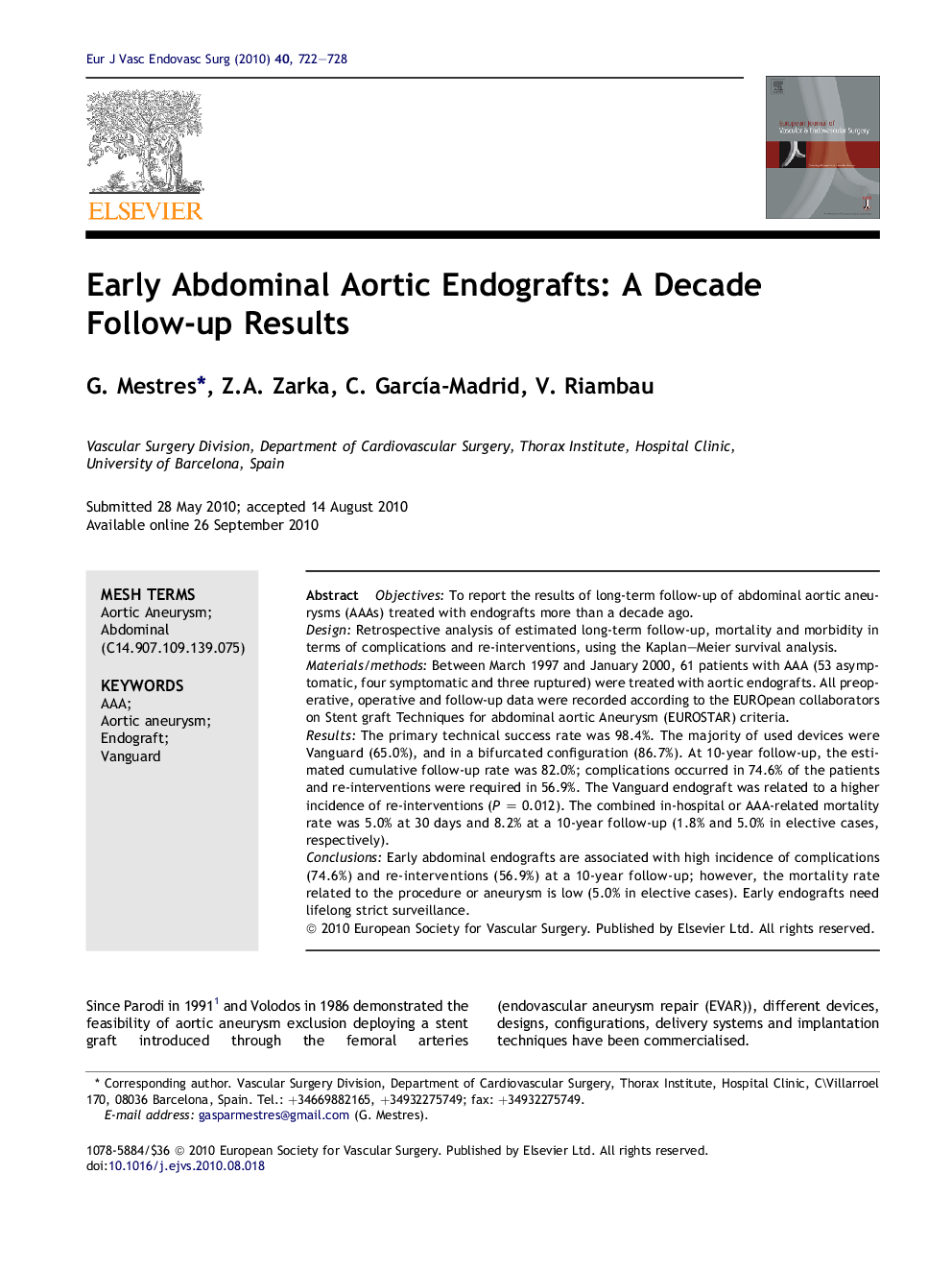| Article ID | Journal | Published Year | Pages | File Type |
|---|---|---|---|---|
| 2912828 | European Journal of Vascular and Endovascular Surgery | 2010 | 7 Pages |
ObjectivesTo report the results of long-term follow-up of abdominal aortic aneurysms (AAAs) treated with endografts more than a decade ago.DesignRetrospective analysis of estimated long-term follow-up, mortality and morbidity in terms of complications and re-interventions, using the Kaplan–Meier survival analysis.Materials/methodsBetween March 1997 and January 2000, 61 patients with AAA (53 asymptomatic, four symptomatic and three ruptured) were treated with aortic endografts. All preoperative, operative and follow-up data were recorded according to the EUROpean collaborators on Stent graft Techniques for abdominal aortic Aneurysm (EUROSTAR) criteria.ResultsThe primary technical success rate was 98.4%. The majority of used devices were Vanguard (65.0%), and in a bifurcated configuration (86.7%). At 10-year follow-up, the estimated cumulative follow-up rate was 82.0%; complications occurred in 74.6% of the patients and re-interventions were required in 56.9%. The Vanguard endograft was related to a higher incidence of re-interventions (P = 0.012). The combined in-hospital or AAA-related mortality rate was 5.0% at 30 days and 8.2% at a 10-year follow-up (1.8% and 5.0% in elective cases, respectively).ConclusionsEarly abdominal endografts are associated with high incidence of complications (74.6%) and re-interventions (56.9%) at a 10-year follow-up; however, the mortality rate related to the procedure or aneurysm is low (5.0% in elective cases). Early endografts need lifelong strict surveillance.
